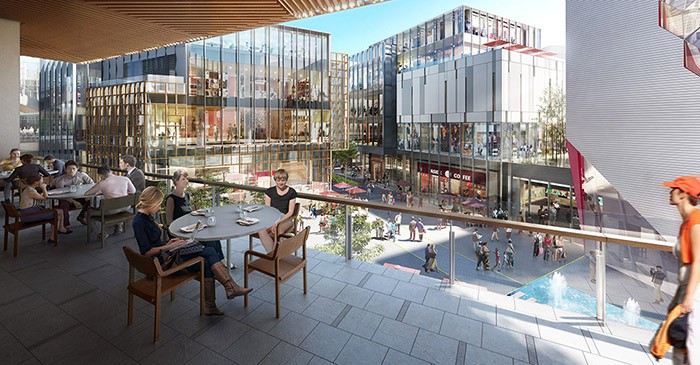
Benoy’s Gala Avenue Westside will create a social retail hub in Shanghai’s Lujiazui district
Pressure from e-commerce is focusing physical retail on the appeal of shopping as a social activity. Leveraging the social aspect effectively will require creating distinctive, attractive shopping environments.
Building a social retail hub is one of the central themes of Gala Avenue Westside, a commercial project in Shanghai’s Lujiazui area designed by architects from Benoy’s Shanghai studio, in concert with the UK-based firm’s teams from Hong Kong and London.
The designers’ concept combines 12 low-rise retail centres connected to a 100-metre tall tower to create a retail-led cultural and entertainment hub on the site of a former shipyard in what is now the heart of Shanghai’s financial district.
Benoy’s Gala Avenue Westside will bring a unique commercial proposition to Lujiazui Harbour City development in Shanghai, making use of its riverfront location to provide more than just brand name shops and entertainment for customers. The project’s pedestrian environment leverages walkability to maximise the social value of retail, entertainment, and food and beverage offerings, as well as other public facilities alongside its commercial offer.
To gain more insight into how retail developments can leverage their social advantages, Mingtiandi spoke with Benoy Director, Qin Pang, who heads the firm’s Shanghai studio and Simon Bee, the firm’s Managing Director of Global Design, about the Gala Avenue Westside project, which is set to open in 2018.
Working with the River

Qin Pang of Benoy’s Shanghai studio
Mingtiandi: The Gala Avenue Westside formerly served as a shipyard. Did this have any influence on the design of the new project?
Qin Pang: Yes, the historical context became a key design driver, not only for Gala Avenue Westside, but as part of a much larger vision for the Masterplan of Lujiazui Harbour City. The area once was a thriving hub of activity and community, a feeling which we wished to recreate. Also, within the massing forms, details and materials, we pay homage to the history of the area.
Mingtiandi: The frontage along the Huangpu River is quite long – did this provide any advantages to the scheme?
Qin Pang: We have taken advantage of great views out across the riverfront and to the activated landscape that hugs the water’s edge by introducing terraces on the third floor, which place you above the canopy of trees. These terraces serve restaurants, bars and cafes creating an exciting and lively atmosphere.
Mingtiandi: Commerce along the Huangpu is what gave birth to Shanghai, but most business in the city now happens far away from the riverfront. Do you see a chance for the river to once again play a central role in Shanghai life instead of just being something to tunnel under or bridge over?
Qin Pang: There is actually an ongoing government initiative to reconnect and activate the Huangpu riverside. After watching successful regenerations of waterfronts globally, such as London’s Southbank, Shanghai looks to develop more of its own high value destinations with strong pedestrian connectivity and great mixed use offers.
Mingtiandi: How do the office tower and the retail plaza complement each other? Is the retail element there primarily to benefit the people working in the office tower?
Qin Pang: We see the retail plaza as a heart of the larger development, there to be experienced by users of the much wider Masterplan. To that end, we have not made the tower overbearing and have placed it on the periphery of the site. There it commands its own strength from sitting within a larger family of towers belonging to the adjacent plot. This location also gives it great connectivity to the primary access road.
Going Low in a High Rise Area
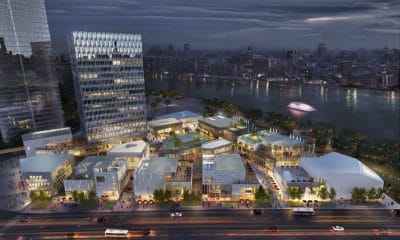
Gala Avenue Westside connects 12 low-rise retail centres to a 100-metre tall tower
Mingtiandi: Gala Avenue Westside is a 153,000m2 retail and office project. In most mainland mixed-use projects of this scale I would expect to see a 90,000m2 office tower with an attached 60,000m2, eight-storey shopping mall. Is this not the most efficient use of space?
Qin Pang: Efficiency is always important, but as architects we have to consider the kind of environment we are creating. By instead designing retail villas connected by a multi-level set of dynamic outdoor spaces, we encourage exploration and discovery, and focus more on the wider agenda of public space and inclusiveness.
Simon Bee, Global Design Director: We are effectively designing a new district of the city, with its own streets and spaces, well-connected with its surroundings.
Mingtiandi: Lujiazui is the most valuable real estate in Shanghai – why choose two- to three-storey buildings for Gala Avenue Westside? Wouldn’t taller buildings create more value?
Qin Pang: The Government has fixed the urban planning for the area, so there are some constraints to what is possible. Also, adjacent to our plot is a series of towers owned by the developer, so to ensure they keep their value we do not wish to block views out to the waterfront. Lastly, it is important that we create new environments; value can also be had by forming exciting unique destinations.
Driving Retail Traffic in a Competitive Environment

Simon Bee, managing director of global design at Benoy
Mingtiandi: With the rise of ecommerce, the entertainment aspect of retail is playing a bigger role in shopping centres, how did this trend influence the design of Harbour City?
Qin Pang: A key principle was to design flexible space that is future proof. As consumer culture shifts, our commercial centers must have the ability to react and adapt efficiently and quickly.
Simon Bee: By creating a new and compelling urban place, we have imagined an experience that the Internet cannot compete with.
Mingtiandi: Gala Avenue Westside is located on what might be Shanghai’s dominant east-west corridor, and if I’m a shopper, I could visit a few different retail destinations from Zhongshan Park in the west to Century Avenue in the east. Does the growing number of retail centres in Shanghai influence your approach to a project like Gala Avenue Westside?
Simon Bee: Gala Avenue Westside will be unique in this area and its simple urban language means it has the ability to adapt over time and stay fresh, despite the changing retail landscape. It represents an authentic new quarter of Shanghai – an urban contribution. In our experience, this kind of contrast to existing offers drives up visitor numbers.
Mingtiandi: What types of retailers do you think would benefit most from Gala Avenue Westside’s location and design?
Qin Pang: We see, especially within the Chinese market, that younger generations are becoming a lot more brand conscious and demanding more choice. As we consider this multi-level experiential retail village model to become more prevalent as the next step in retail evolution, we will appeal to this demographic and expect the tenant mix to reflect this.
Mingtiandi: If I have friends visiting Shanghai next year, should I tell them to add Gala Avenue Westside to the list of must-see destinations?
Qin Pang: Of course! The whole area, with Gala Avenue Westside at its heart, is something quite different and will become a destination well worth experiencing.
Gala Avenue Westside Illustrated
- Benoy’s Gala Avenue Westside will create a social retail hub in Shanghai’s Lujiazui district
- Gala Avenue Westside connects 12 low-rise retail centres to a 100-metre tall tower
This sponsored feature was created in cooperation with Benoy. More information on Gala Avenue Westside is available here,
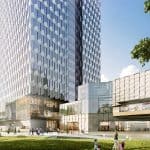
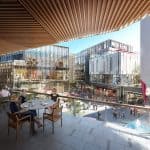
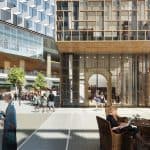
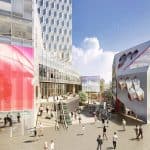

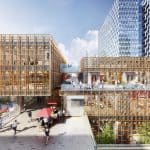
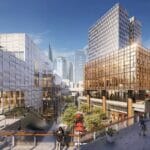
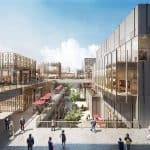
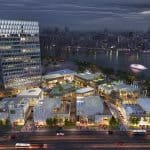
Leave a Reply